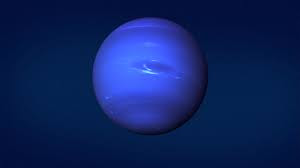Neptune, discussed
NEPTUNE MAY SEEM such as a peaceful sapphire globe initially glimpse. But do not let its peaceful azure hues trick you: The 8th planet from the sunlight is a wild child.Cara Ampuh Memenangkan Permainan Sabung ayam online

Neptune is the windiest planet in our solar system, whipping up memorable gusts that can get to greater than 1,200 miles a hr. That soothing sapphire expanse does expose some of the whirling mayhem listed below through cloudy bands and huge gyres that appear like dark spots on its surface.
One "Great Dark Spot" caught by Voyager 2 in 1989 could have in shape a whole Planet inside. However it is since disappeared, others have taken its place. In March of 2019, astronomers exposed for the very first time that they witnessed the birth of among Neptune's huge tornados. Nearly as big as the maelstrom that Voyager recorded, the baby tornado appeared to materialize from bright white clouds in between 2015 through 2017, becoming a full-fledged gyre in 2018.
rbiting at a range of approximately 2.8 billion miles from the sunlight, Neptune is the furthest planet yet found in our solar system (that's, after Pluto's reclassification as a dwarf planet in 2006). Neptune rotates quickly compared with Planet, with someday taking 16 Planet hrs. But its great range from the sunlight means the years are lengthy, requiring 165 Planet years to earn one journey about our glowing celebrity.
At such a range from Planet, Neptune is the solar system's just planet that can't be seen in our evening skies without a telescope. Also surrounding Uranus, however pass out, glints overhead on a clear dark evening. That means that Neptune had not been an easy planet to discover. Some recommend that Galileo Galilei first found Neptune as very early as 1613. Many think that he mistook it for a celebrity at the moment, yet some researchers think that may not hold true.
Most characteristic Neptune's exploration to mathematical proficiency in the 1800s. After the exploration of Uranus at the millenium, astronomers noticed it appeared to be affected by an unusual gravitational pull. This oddity led British mathematician John Sofa Adams to determine Neptune's potential position in the 1840s. A pair of years later on, French astronomer Urbain Le Verrier did the same.
The computations were finally verified in 1846 when German astronomer Johann Gottfried Galle used Le Verrier's forecasts to locate the ice giant, which was dubbed Neptune after the Roman god of the sea.
eptune is simply a couple of ice titans in our cosmic family, together with Uranus. It is blanketed in an atmosphere of hydrogen and helium, with traces of methane, sprinkle, and ammonia. Underneath a preliminary cold layer, temperature levels and stress quickly increase.


